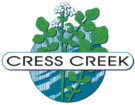RECOMMENDED PLANT LIST
Fernbank Design Guidelines*
This list has been prepared based on experience with what plants have thrived in our Fernbank neighborhood during the past 20 years. Considerations are: lot sizes; exposure to sunlight; soil composition; maintenance requirements including pruning, feeding and pest control; deer resistance; noninvasiveness; hardiness to this area; and notably, the estimated size at maturity. These parameters relate to both trees and shrubbery, which can overtake other exterior features such as blocking windows and entryways and the line of sight on our roads.
The tree selections are estimated to grow no more than 40 feet tall with a maximum spread of 20-30 feet at maturity. Consider rate of growth, proximity to the dwelling and to each other. Planted too closely, they will crowd each other and become more susceptible to pests and disease.
The list is not exhaustive and there are some excellent on-line resources to help with your decision. Note that many new cultivars have been developed over the past 20-30 years resulting in a variety of shapes and sizes, and in stronger and more disease and pest free plants.
Shade/Canopy Trees
- American Hornbeam
- American Smoke Tree
- Fringe Tree: Chinese and Virginia
- Maples: Brandywine red maple, Coral Bark
- Maple, Paper Bark Maple, Trident Maple
- (most other maples become too large)
- Pagoda Tree
- Tri-Color Beech (needs shelter from wind/sun)
Ornamental/Flowering Trees
- Autumn Brilliance Serviceberry, a native tree to this area
- Cherry: Yoshino Cherry and Weeping Cherry
- Crape Myrtle
- Dogwood: American and Chinese (Kousa)
(There are many varieties within these groups) - Flowering Crab
- Ivory Silk Japanese Tree Lilac
- Japanese Maple: many cultivars
- Magnolias: Little Gem and Sweet Bay are Evergreen
- Purple Leaf Plum
- Rose of Sharon
- Redbud (not a long lived tree)
- Saucer and Star Magnolia
Evergreen Trees
- Blue Atlas Cedar
- Blue Spruce (many cultivars can be tricky
- without regular inspections for disease and
- pests, come in a variety of sizes and shapes)
- Chinese Juniper
- Cypress: Arizona Blue Ice
- Deodar Cedar: Electric Blue, Heavenly Blue
- False Cypress Varieties
- Green Giant Arborvitae
- Hawthorn
- Hollies: Mary Nell, Burford Nana,
- American, Oakleaf
- Pine: Austrian and Swiss
Shrubs
- Abelia
- Azalea
- Barberry
- Boxwood
- Butterfly Bush (non-invasive varieties)
- English Laurel
- Fothergilla
- Hollies: Inkberry (Glabra) or Japanese varieties
- Hydrangea (very susceptible to deer damage)
- Juniper (many varieties are available)
- Lilac: Miss Kim and Palibin
- Nandina (some varieties can be invasive)
- Oregon Grape (Mahonia) non-invasive varieties
- Osmanthus Goshiki
- Pyracantha
- Red Tip Photinia
- Roses (shrub roses such as Floribundas and Knockouts)
Ground Covers
- Ajuga
- Blue Fescue
- Carpet Roses
- Creeping Junipers
- Creeping Jenny
- Creeping Thyme
- Heather
- Lamium
- Liriope
- Pachysandra
- Periwinkle/Vinca
- Sedge
- Soapwart
- Sweet Woodruff
- Spiraea
- Viburnum (choose carefully as some varieties get very large)
Fernbank’s large deer population can be very damaging to our gardens. The selections above have been made with this in mind. While sprays can be useful, nothing seems to be provide 100 per cent deer proofing. Some owners have had limited success with azaleas and rhododendron in sheltered areas. Consider perennials such as ferns, coreopsis, yarrow, lavender, or cranesbill. Notable omissions from the list are hostas and daylilies, which are extremely tasty.
*Revised March 2021 by J. Moore and Elisabeth Staro. Replacing Recommended Plant List in Appendix 3, page 22 of Design Guidelines
